The Day After — Part II

Dealing with new tech habits for our children and ourselves, stretching our limits to help organizations that were always on our tzedakah roster, reimagining our simchahs, and navigating the emotional fallout of our families and new norms for our communities, are all part of the “new normal.” When the dust settles and life reemerges from lockdown, how will we readjust to a new reality? Part Two of a special project
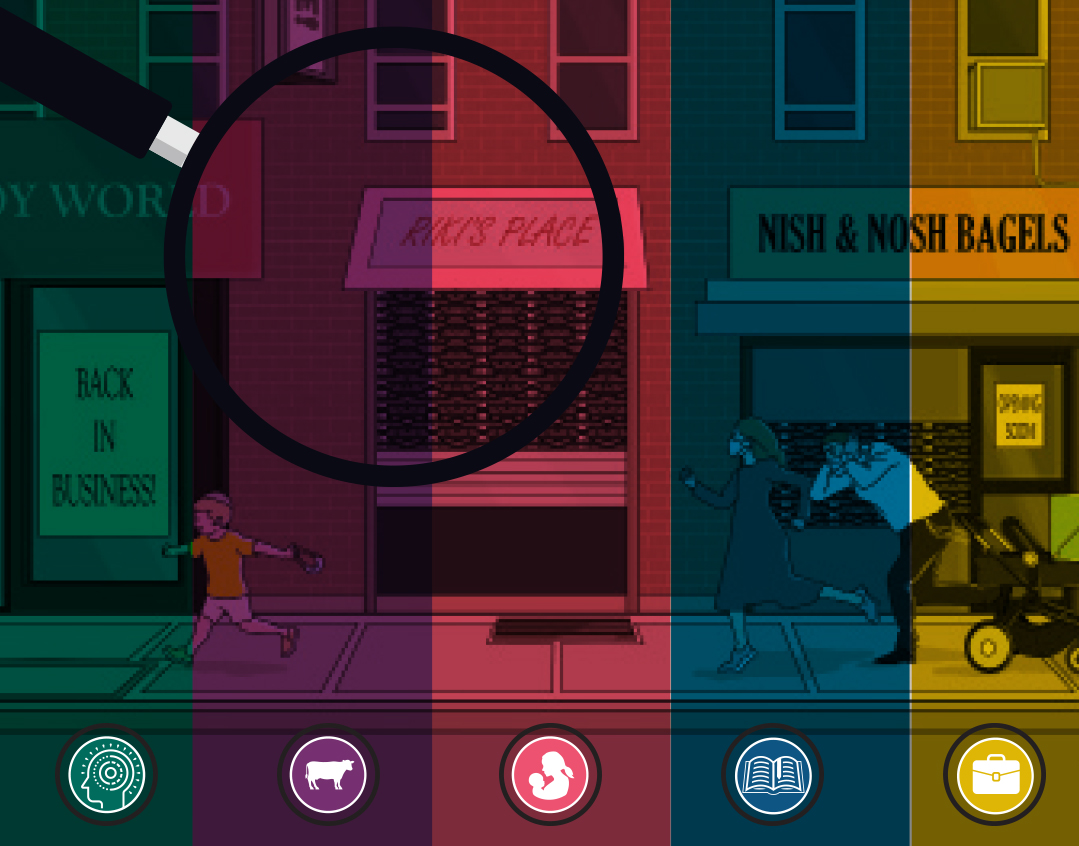
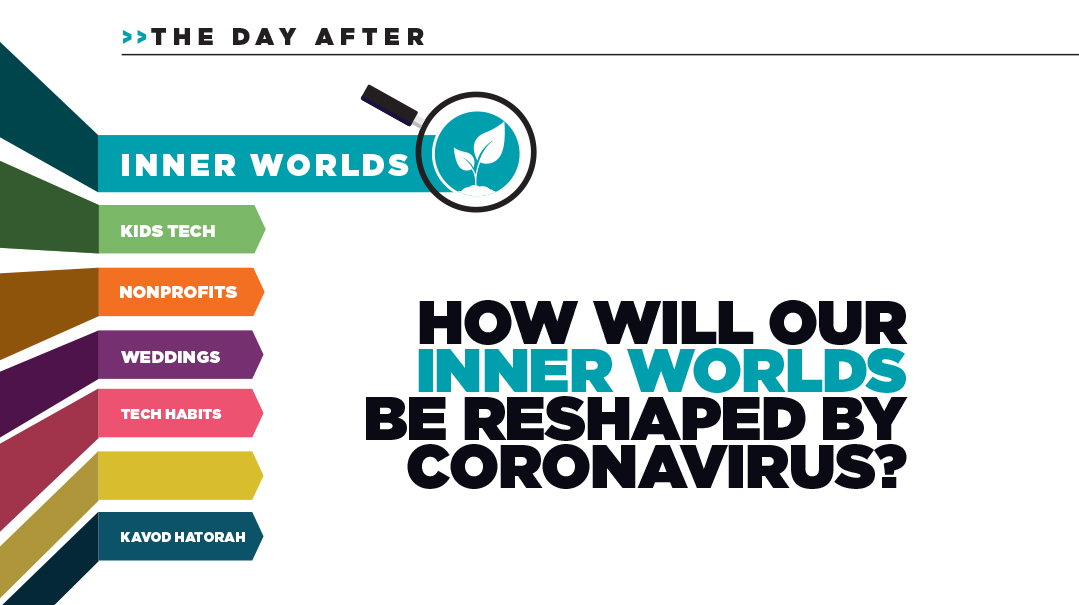
Rav Reuven Leuchter
Prepared for print by Rabbi Noam Paley
For several weeks now, many of us have had a strong feeling that HaKadosh Baruch Hu is manipulating nature because He wants to see something happening — and in particular, that He wants something from us. A change this big, and this disruptive, didn’t occur just so that after the crisis passes, everything should go back to the way it was before.
In order to be able to answer the question, “What does Hashem, your G-d, ask of you,” we first have to accept the premise that quite possibly, the Creator has plans for us that don’t match our assumptions.
Our instinct is to view every new disruption merely as a temporary situation to be overcome, rather than as a wakeup call. In order to avoid this error and begin to think with a more open mind about the spiritual issues facing us, it’s crucial that we not rush forward. In Kelm they used to say that the ears are on the head, not on the hands; if we want to be capable of hearing, we first have to be willing to think, without acting prematurely. The Alter of Kelm could wait twenty years until he felt he was ready to implement a new spiritual perception. The avodah of changing is an enormous undertaking, and it takes time.
It’s common for people — good, growing people — to react to striking events by committing to specific resolutions or upgrades in their performance of mitzvos. While that is commendable, it also comes with a risk. As well-meaning as the “quick kabbalah” may be, sometimes it actually blocks us from true change.
The immediate urge to find some quick, concrete way to upgrade our avodas Hashem often skips a crucial stage of really listening, and really opening our inner selves. “Heeding [Hashem’s voice] is better than bringing sacrifices” (I Shmuel 15:22). The ability to hear takes priority even over “sacrifices,” that is, even over religious acts that are objectively positive. One must know how to take the necessary time to hear and absorb the message correctly before running to the altar with an offering of fatted calves.
But what, you may ask, does that deep contemplation actually accomplish? Although it might seem as if thinking doesn’t lead a person to any concrete destination, it is in fact intrinsic to a process that opens up a person’s inner world.
Taking the time to ponder instead of jumping to act allows us to experience hashgachah pratis in a very personal way. The resulting change is internal, quiet, without fanfare — but it is genuine. The Rokeach, in the introduction to his great sefer, writes that “there is nothing higher in emunah than hatzne’ah leches,” modesty in one’s service of Hashem, for the real message the Creator communicates to us is internal, out of the public eye. This is the way to build one’s inner world of avodas Hashem.
During ordinary times, this approach is almost diametrically opposed to one of the most influential forces in our society: our educational institutions. Each school or yeshivah operates by constructing a sturdy, uniform framework for all its students, with uniform goals, benchmarks, and milestones. And that is as it should be. But in order for optimal chinuch to take place, there must be a delicate balance between the school’s role and the private unfolding of the student’s inner spiritual world. When this balance is disturbed, those uniform, institutionalized standards may hamper the student’s ability to introspect, grow, and change from within. That impressive outer shell may well prevent us from building an inner world rich in genuine faith.
Of course, this situation in reverse is just as harmful. If the external framework of avodas Hashem isn’t sturdy enough, then there is nothing to support inner growth. And that external structure of avodas Hashem must be based on uniformity; one’s unique brand is not meant to be put on display in the external performance of a mitzvah. This is exemplified in the offerings brought by the nesiim during the dedication of the Mishkan. The offerings themselves were all identical, whereas the inner kavanah with which they were brought varied from one nasi to the next, as the Ramban explains at length. When this inner component is revealed in public, it loses the dimension of modesty that is its very basis.
But if it is missing entirely, then the offering is lacking as well.
Due to the coronavirus, many of us have been functioning less than optimally in the external sphere. The closure of shuls and places of learning is only one aspect among many that caused us to shift to a lower gear in the outer performance of Torah and mitzvos. It is hard to see this hampering of our religious life as a positive thing, but perhaps we can focus instead on the gains to be made in the inner sphere.
For in order to encourage introspection and to nurture buds of inner spiritual vitality, some shortcoming in our external performance is almost a necessity, at least to a slight extent. We’re all familiar with those fragile moments of spiritual elevation that are so easily lost. In order for that kind of elevation to be maintained in the long term, our p’nimius requires quiet cultivation over a long period of time. And that is the gift we’ve been given during these months.
Let us hope that the current crisis will leave a lasting impression in its wake. As parents and educators, we should hold back from attempting to make up for our children’s lost time and lost learning through intensive pressure. We have survived a difficult period because, among other things, we took our foot off the gas pedal. Let’s not fall back into that same old pattern of pressure and forced conformity in a misguided effort to fill in the gaps – and trampling, in the process, the delicate shoots that have just begun to grow.
Let us also hope that when we resume our routines, we will find a place for that personal experience of avodas Hashem within the walls of our educational institutions. Perhaps our children’s teachers and rebbeim can confer with their students individually and try to find out what they discovered in relation to their avodas Hashem during their extended stay at home. This could be a wonderful opportunity for teachers to discover the unique strength of each student and see what they can do to encourage and foster it. For some, this will be a venture into new territory that requires mutual trust between the school and the student — and if so, this is an excellent opportunity to work on gaining that trust.
This kind of conversation can give our schools a new identity: not just as the establishment of structure and stability, of uniformity, of shared benchmarks – but also as an echo of the student’s inner world.
And by conducting the same conversations on our own, we can hope to forge a newly strengthened brand of avodas Hashem. It will be a brand that combines the advantages of our community norms with our individual makeup, and the stability of a sturdy outer structure with the unique and personalized service of a vibrant and blossoming internal landscape.
Rav Reuven Leuchter, a primary disciple of Rav Shlomo Wolbe ztz”l, is among the leading mussar personalities in Eretz Yisrael today, with his worldwide network of shiurim and teleconferences. He is the author of Meshivas Nefesh on the Nefesh HaChaim, an annotated commentary on Rav Yisrael Salanter’s Ohr Yisrael, The Pesach Hagaddah, and Living Our History.
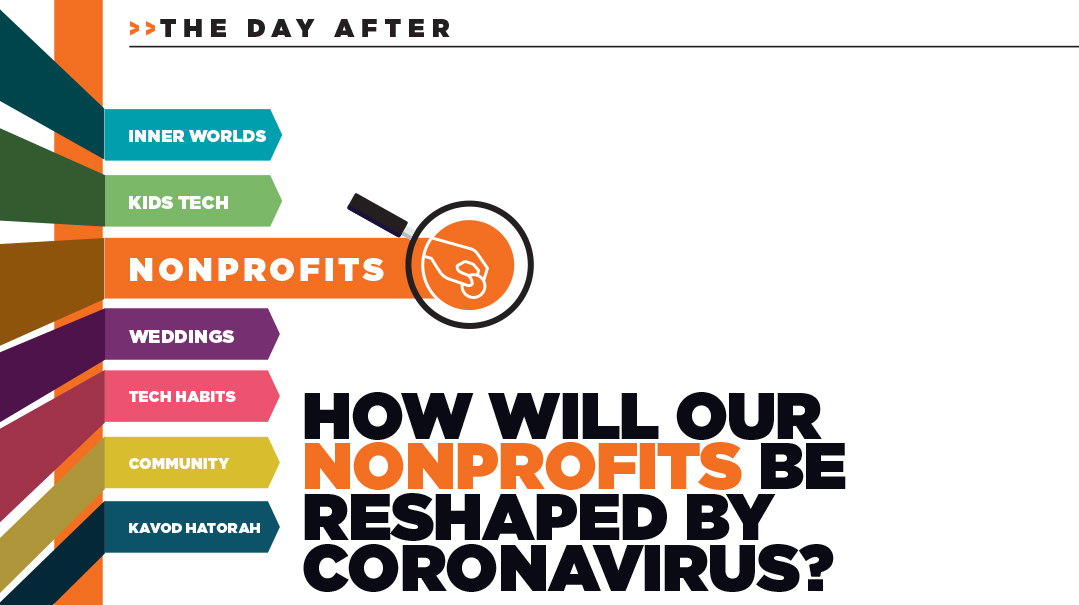
By Gedalia Guttentag
They provide food for the needy, educate our children, deal with abuse, and support childless couples — but along with the rest of the economy, the vital nonprofit sector has been left gasping for air by coronavirus.
Even though it’s too early to assess the full extent of the damage to this sector, some trends are becoming clear. As expected, funding has surged for critical human services like food distribution, at the expense of monies funneled into organizations targeting, for example, Jewish education. COVID-19 is also speeding up long-term trends like use of online platforms to cope with smaller staff, and is entrenching the phenomenon of online fundraising. The last time the nonprofit sector was badly hit was in the 2008 recession, but this time the challenge is far greater.
“At UJA-Federation of New York, we’ve allocated $44 million to deal with COVID-19, including over $2 million directly focused on food insecurity,” says managing director Alex Roth-Kahn. “We are just as much about providing opportunities for Jewish life as serving vulnerable individuals, but in a crisis, the human-services agenda such as food security is front and center.”
A major destination of UJA funds is the Metropolitan Council on Jewish Poverty, which operates a pantry network across New York, including Brooklyn. The Met Council, as it is known, provides a metric to measure how badly the Orthodox community has been hit by coronavirus. “We’ve seen a 40 percent increase in provision of kosher food,” says Roth-Kahn. “Last year they were serving 155,000 poor and near-poor Jews, and that’s now climbed to 218,000.”
While funding different organizations within the Orthodox community, from the Sephardic Bikur Cholim and the Y of Washington Heights, Amudim, and Ohel to social services organizations in Boro Park, Far Rockaway, and Queens, the UJA also provides food, necessary emotional-support services, and dignified cash assistance to families through unmarked grocery store cards. But with the lockdown closing traditional channels for aid distribution such as meals provided through community centers, the UJA has had to innovate: “Uber drivers have few rides, so the Met Council established a partnership with Uber to bring non-perishables twice a month to members of the community who can’t come to collection points,” explains Roth-Kahn.
In a trend that will be echoed across the spectrum of Jewish philanthropy, the vast majority of the UJA’s $23 million targeted grant budget focused on human services over the next fiscal year will be taken up by COVID-19-response, at the cost of other programs. “Obviously summer camps and Israel trips are not open, but other parts of UJA that are not in human services, such as youth groups, after-school programs, and adult education will experience cuts.”
Definitive figures for Orthodox philanthropy are hard to come by, but indicators of the surge in resources now directed at poverty relief come from individual organizations. Rabbi Naftali Miller, director of development at the Agudah and cofounder of Chasdei Lev, which provides support for rebbeim, says that the scale of those who are now needy has forced organizations like his to think bigger. “During Hurricane Sandy in 2012, we saw that the people who suddenly needed financial assistance were not those who generally needed help. It’s the same now: There are thousands of people, from therapists to dentists, whose jobs involve contact, and others like travel agents whose industry is gone, who suddenly need help.”
Bringing together Chasdei Lev and Agudah, Rabbi Miller, his brother Shmuel, A.D. Motzen, and others were able to create an online platform to leverage additional funds for families across the New York metropolitan area through these non-profits. “We were able to raise $1.5 million, which was added to the communities’ local funds, meaning that each family received $2,000, for a total of $6 million,” says Rabbi Miller.
Another measure of the switch to bread-and-butter philanthropy comes from crowdfunding platforms. Avi Kehat, cofounder of the Chesed Fund, a nonprofit crowdfunding platform, has seen donations to these causes more than quadruple. “On a given month we’ll process $1–2 million in donations, but in April that jumped to $9 million,” he says. “Most of those donations were COVID-19-related, targeted to fresh widows and orphans. Despite all the tragedy, it’s a beautiful thing is to see people react by translating their feelings into an action, knowing that tzedakah tatzil mimaves.”
Not wanting to compete with these urgent causes, he says, many organizations have put their fundraising campaigns on hold —with the exception of lifesaving nonprofits, such as Hatzolah. Last week’s Hatzolah-thon campaign, which was in lieu of their regular post-Pesach fundraiser and garnered $15 million, was a timely example of this shift in the philanthropy landscape.
This rise of crowdfunding, which peaked over the past year with a tidal wave of matching campaigns, will probably be here to stay, at least for the foreseeable future. Social distancing means fewer dinners and less face-to-face giving, for which the logical solution is online campaigns.
The kiruv sector, which employs thousands of people worldwide, is a prime example of COVID-19’s threat to the Jewish nonprofit sector. But the irony, according to Rabbi Steven Burg, CEO of Aish HaTorah, is that the need for these organizations is greater than ever. “I don’t think interest has ever been so high,” he says. “We’re seeing a tremendous resurgence of interest in Judaism from secular Jews, which we can gauge through our deluged ‘Ask the Rabbi’ live chat on our website. Even under lockdown over Pesach, 74 guys stayed in Aish HaTorah in Jerusalem, and they had a special experience. But we’ve had to put almost the entire organization on unpaid leave.”
A recent University of Copenhagen study showed skyrocketing Google searches for prayer since the coronavirus hit in mid-March, a trend that is true across secular as well as traditional countries. One metric within the Jewish world comes from Partners in Torah, which facilitates phone-learning chavrusas between religious and unaffiliated Jews. “Over 3 weeks in March we set up as many new chavrusas as we normally do in six months” says Moe Mernick, Partners in Torah’s COO. “Over the same period we had a surge in applications for serving as mentors as well.”
That spiritual interest is an opportunity, but mass funding cuts means that outreach organizations are being hobbled just when they’re needed most.
“In a downturn, philanthropy is always the thing to be put on hold first,” says Rabbi Burg. “Today when we speak to donors it’s about being there for people. It’s not about fundraising.”
COVID-19’s impact on the outreach world isn’t limited to budget-slashing — it could also profoundly reshape the way outreach works, including the greater use of technology.
“Coronavirus has shot us 20 years into the future,” says Rabbi Burg. “We’ve felt for a while that the whole introductory phase of kiruv could be done online. That’s why we have live chat online on Aish.com. It used to be that you had to be face to face, but under the ‘Aish TV’ brand we’re now running everything from classes to bas mitzvah ceremonies. Aish Academy, our directed e-learning site with courses in parenting, Jewish history, Hebrew ulpan, and basic halachah exploded during April, with the number of active users increasing 220 percent from 1,594 to 5,115.”
Rabbi Burg says that, done right, he believes this is where Aish Hatorah is heading. “We’re turning one big room in the Aish world center into a recording studio for podcasts and video. If that initial ‘dating’ stage is done online, it might mean less manpower, but more exposure.”
But with all its sophistication, technology can’t replace flesh-and-blood interactions, and in an era of slashed funding, kiruv manpower will be an issue. “On a personal level, I wake up every morning with a pit in my stomach,” says Rabbi Berg. “But Hashem loves us and our mission is to help neshamos. We still have to be out there, so we’re just going to have to work harder to make our case.”
Despite the catchall term “nonprofit,” the sector is in fact a spectrum, with different areas of philanthropy under varying levels of threat. But according to Zvi Gluck, CEO of Amudim, a mental health and abuse resource center, the same conundrum — sky-high demand and shrinking resources — faces the mental health sector as well.
“With this pandemic, we’re seeing levels of mental health issues like never before. We’ve gone from 50 new cases a week, to close to a hundred.”
Amudim has responded by opening a COVID-19-support line staffed by volunteers who are licensed mental health professionals, working two-hour daily shifts. In the six weeks of its existence, the hotline has received nearly 1,700 calls for COVID-19-related issues, ranging from bereavement to job loss, general anxiety, and domestic violence.
But here too, increased demand is being met with shrunken funds. “Many of our donors are monthly givers, and we’re now down $170,000 of our half-million-monthly budget,” says Gluck. “The crash of the real estate, nursing home, and hedge fund sectors means that people can’t honor their pledges. Last week we raised $230,000 for therapy subsidies for people impacted by the virus, but by Wednesday night 130 people started therapy, and that money is already gone. We believe that we’re only seeing the tip of the mental health iceberg caused by the pandemic, and we need to increase staff because volunteers can’t substitute for case managers.”
With much of the economy still shutdown, it’s too early to know what the nonprofit landscape will look like after Hurricane COVID-19 dies down. But the experience of the 2008 financial crisis is uppermost in the minds of those involved with nonprofits.
“It took about four years for communities to rebound, and some are still recovering from the recession,” says UJA’s Alex Roth-Kahn. “But this time is worse, in that entire institutions are threatened. That’s why we’re focused on geography, not sectors. There could be mergers and closures of institutions, but we’re providing $20 million of loans for organizations, and we’re also mapping out areas of poverty and the elderly, in order to ensure there will be agencies to provide care in every area.”
Aish’s Rabbi Burg agrees that COVID-19 dwarfs the last recession crisis. “Goldman Sachs said that this is four times as severe as the 2008 financial crisis. In the broader nonprofit world there might be consolidation, but the story is still being written. At the moment we’re just focused on getting out of our homes, but over the next two to three months we’ll be wiser.”
Still, Chasdei Lev’s Rabbi Naftali Miller is hopeful. “When we were running the pre-Pesach campaign, someone heard what we were doing and on his own wired $100,000. To me that showed that as difficult a situation as we’re in now, there are lot of people out there who will stretch themselves to the limit to help another Jew.”
(Originally featured in Mishpacha, Issue 811)
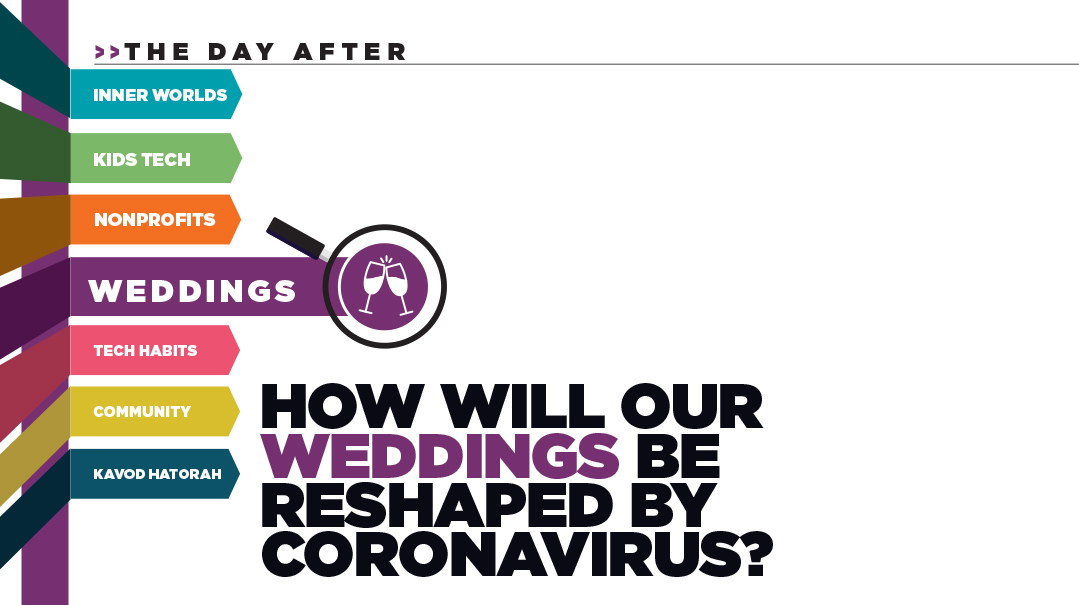
By Shaul C. Greenwald, Esq., as told to Sandy Eller
I’m one of your fellow Jews living in Flatbush. Over the years I’ve made simchahs and attended simchahs. It was over ten years ago that I found myself growing increasingly troubled by the weddings I was seeing all around me. Elements of our simchahs had swelled far out of proportion and what was once considered extravagant, I realized, is now considered de rigueur. Expensive floral backdrops, large orchestras, name-brand singers, and couture gowns had once been the province of the truly wealthy. Now they are considered, by a large swath of our community, to be “standard.”
I noticed something else as well. The price for these newly inflated must-haves is incredibly costly, and incredibly painful. I started hearing of men who were literally collapsing because of financial stress, shalom bayis issues among those who needed to “keep up with the Cohens,” and shocking amounts of money being wasted, often by those who didn’t have any extra cent to spare.
Our weddings, I realized, have become showcases of peer pressure, symbols of excess and vehicles to perpetuate illusions of wealth. And the pure simchah of marrying off a child has been eclipsed for far too many people by worry and crushing stress.
Those scenes of incredible excess along with my knowledge of the terrible price gave me no rest, and with every passing month, I grew more determined that something had to be done. Surely, with thought, effort, and consideration, our community could reevaluate what it meant to make a respectable wedding.
Together with my chavrusa, I put together a set of chasunah guidelines that I hoped would streamline our weddings and lower the financial pressures that often overshadow what should be an event of unparalleled joy.
I knew this idea would be uncomfortable for those who wanted to make their dream weddings a reality, but I felt it was important to take a stand and do something for ourselves and our children, something that would benefit all of Klal Yisrael.
Our initial guidelines were by no means set in stone, but they recommended making the l’chayim and/or vort a family affair in the home, sans party planners or musicians. Similarly, the wedding meal would be limited to close family, with friends invited only for dessert; and flowers, music, liquor limited to a tasteful but simpler standard.
My rav, Rav Doniel Asher Kleinman, is a talmid muvhak of Rav Shmuel Kamenetsky and he set up an appointment for us to discuss these guidelines with the Rosh Yeshivah. My chavrusa and I traveled to Philadelphia to get Rav Shmuel’s approval for our plan and we discussed various issues, including the idea that some businesses would be curtailed or even eliminated by these guidelines, with Rav Shmuel agreeing that these steps were both necessary and appropriate.
Next came the hard part — taking this initiative to the people. It’s hard to change an entrenched community standard, so I decided to start at the top, approaching specifically those people who could afford elaborate weddings. I asked them to commit to simpler affairs, knowing if they set the tone, others would follow, alleviating the pressure on those of more modest means.
I wish I could say that everyone agreed with my assessment and signed on, but that’s not what happened. Some people didn’t agree that our weddings were over the top and others felt that there were more pressing issues that needed to be addressed. Suffice it to say it was a tough sell and it wasn’t being embraced exactly the way I had hoped. The time just didn’t seem right.
Then coronavirus struck. Suddenly chasunahs were being held in backyards, with only a handful of people joining in. People were engaging in serious soul-searching, and I knew the time was right to reopen the conversation on how our simchahs were being conducted. Faced with tragic deaths, terrible sickness, and serious financial devastation, coronavirus had us all contemplating what really matters in our lives, and suddenly charcuterie boards and string quartets just weren’t all that important anymore.
Unbeknownst to us, another askan had been working on a similar concept and had been speaking with Rav Yisroel Reisman. After hearing about our initiative, he arranged for us to speak to Rav Reisman, who advised us to drop the details about flowers, music, and liquor and instead keep things simple by limiting the wedding meal to a suggested 250 invited guests, the vast majority of whom would be family members. Friends, neighbors, and everyone else could be invited to share in the simchas chassan v’kallah afterward.
Rav Elya Brudny and Rav Moshe Tuvia Lieff both gave their haskamos to the newly titled Simcha Initiative, which also eliminated elaborate vorts, and in its first few weeks we had over 800 people signing on, committing to making simpler weddings and setting a new standard in our communities.
Rav Reisman sees the initiative not as a takanah — takanos haven’t had much success in our community — but rather as a kabbalah, to be undertaken by those who feel this specific plan can work well for their needs.
We’ve gotten complaints about the specifics of the plan: Some people say it doesn’t go far enough, others say the specific clauses don’t work for their particular circumstances. The main thing, as we see it, is the underlying commitment to simplify our simchahs. When you get there, you can work out the details. Understandably, different families have different considerations and sensitivities, and the number 250 may very well not be realistic or practical for those with large families. And when making a wedding, there is always another side involved — a side that may have different calculations and different expectations. So one blanket solution is not likely to work for all.
That said, the concept of reevaluating what a Jewish wedding should — and shouldn’t — be is something that applies to many people in our community, no matter how they translate it into action. As Rav Reisman told us, no “elaborate” vort obviously means different things to different people. That is fine. The goal is an attitude of knocking things down a notch or two — or three or four.
Less than three months after the virus hit our community, people from coast to coast and everywhere in between have signed up for this kabbalah, with over 1,400 commitments coming from five different continents. Obviously, right now it’s too early to predict how those commitments will play out; weddings are still severely restricted under the quarantine guidelines, so these plans are still in the realm of the theoretical. But with the hope that soon it will be safe to make weddings, and the signatories can keep to their commitments, do the math: If each of those people makes just one wedding and saves $15,000 on their simchah, $21 million dollars will be saved — and with the average person making three, four, five, six, or more weddings, staggering amounts of money will be saved.
Seventy years have passed since the greatest churban our nation has ever experienced and after the war, there was no greater simchah than seeing a couple getting married. People had a genuine and justifiable desire to celebrate those wedding in high style. But as our expectations grew and the list of “must-haves” swelled, we seem to have lost our way. Perhaps the coronavirus outbreak will finally get us to hit the reset button, something we desperately need.
Looking to the future, will our communal standard for “a beautiful simchah” change? It’s hard to know. In many ways, it will be easier to fall back to the familiar template. Change takes work. It takes vision and commitment, sacrifice and grit. But judging from the number of people who are truly open to reimagining their simchahs, and the number of people who’ve already taken the step of signing on to a plan that gives clear dimensions to that goal, I truly believe we’re on our way.
Shaul C. Greenwald, Esq. is the CEO of Riverside Abstract, and a Flatbush resident. He and his wife, Faigie, are the proud parents of five children.
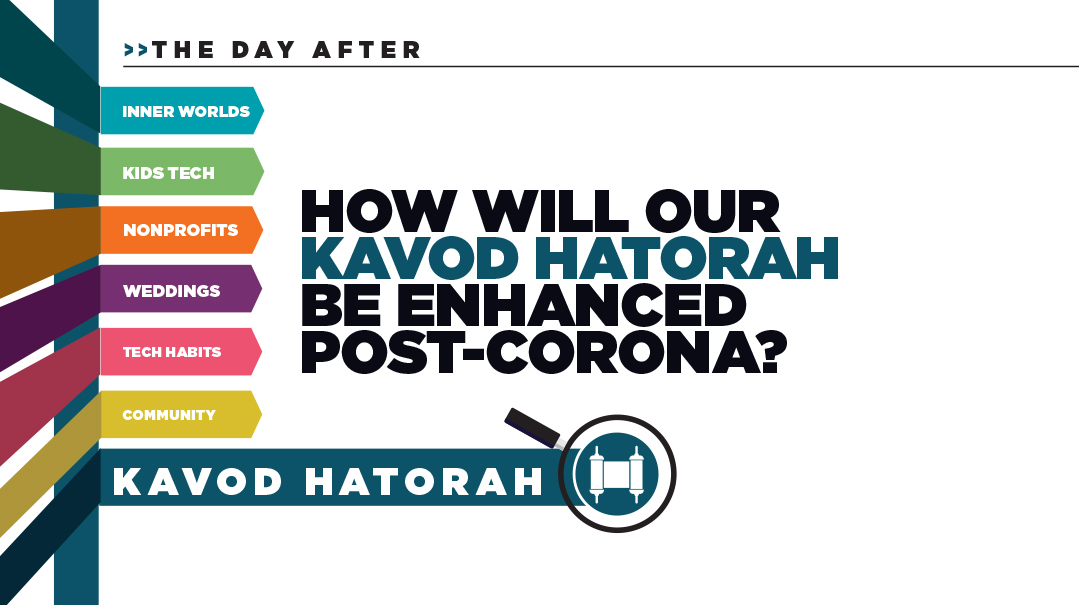
Jews are passionate. The “porch minyanim are okay” people against the “it’s sakanas nefashos mamash” people. The “schools should give more than an hour a day” versus “it’s too much for the kids.” The “phone isn’t enough” facing off against team “Zoom will lead to Internet addiction.”
It’s not just the flurry of opinions, it’s the flurry of emotion: My rav is right and yours is wrong.
When this is over, perhaps we can suggest a subtle change. Follow your rav, for sure. But that doesn’t mean the other one is wrong.
You know what rabbanim are, right? They’re the ones who’ve given us stability over the last two months. The ones who, even without Piskei Teshuvos or easy-access psak seforim, were clear and direct from the start, segueing from the first psak about selling chometz gamur into the nightmarish world of end-of-life sh’eilos, when and how to fight the hospital and how to conduct a levayah with no people and no hespeidim.
The rav is the one who instantly grasped the challenges quarantine would pose to shalom bayis and chinuch and responded with more shiurim, classes, lectures, chizuk shmuessen, and private conversations.
Now, talmidei chachamim don’t have to “deliver” to be worthy of honor, but we can acknowledge their solidness and strength throughout what will go down in teshuvah seforim as “tekufas haKoronah.”
You see, Dr. Fauci can vacillate — he’s not sure, yes masks or no masks, time will tell, we may have a vaccine next year and we may not — but our rabbanim don’t have that luxury. The field of knowledge they represent is too precise for that.
So how can we honor them? They’re not the type to appreciate a drive-by honking thank-you parade. And free pizza for rabbanim like they do for first responders is a start, but it doesn’t cut it. (Anyhow, where would they eat it? Are rabbanim allowed to eat pizza? Does pizza even taste good if half the shul is judging you with each bite?)
We can probably assume that rabbanim weren’t looking for thank-yous when they signed up for a life of public service, and they’re content to shepherd HaKadosh Baruch Hu’s flock with patience and good humor without any ticker-tape parades. But given the clarity of vision quarantine has afforded us, we know that a thank-you is overdue, right? They were first responders all along. So when the debates hopefully settle down and we can go back to the simpler, less intense ideological battles, how will we ensure that our children (and ourselves?) have a proper approach to what is one of the bedrock principles of our faith?
We can start by taking a moment to contemplate what a talmid chacham is, what they know, how hard they’ve worked to get there. They are talmidei chachamim! That’s a big deal. Maybe the biggest deal of all. The light of Torah is real and it resides within them, upon them, around them.
If a talmid chacham would never pasken a sh’eilah, give a shmuess or guide a person, he is still worthy of reverence.
How would he characterize the apikores mentioned in the mishnah? Rav Yosef says, “It refers to one who asks, ‘How have the Rabbanan benefited us with their Torah study? They learn… for their own benefit.’ ” The gemara continues by stating that those who learn Torah maintain the existence of the entire world, protecting the place of their residence. (Sanhedrin 99b)
Respect for a talmid chacham means respect even if I personally don’t understand why he said/did/went/signed.
If in the pre-corona world you had boxes to categorize rabbanim — speaks too long, gives derashos that are too deep or too simple, wasn’t warm to my visiting brother-in-law, sees Trump differently than I do — now it’s time to let them go. Not because the rav is necessarily right on everything. Human infallibility was never a Jewish concept. We tremble when we say Rabi Akiva’s name — every day, in every beis medrash, his Torah is taught. His support of Bar Kochba, even as Bar Kochba was rejected by other Tannaim, is right there on record, in Chazal, but that’s not relevant to us.
Rabi Chananya ben Tradyon kept teaching Torah after it was outlawed by the Romans. Rabi Yosi ben Kisma urged him to stop. “Chananya my brother,” Rabi Yosi ben Kisma said, “don’t you know that this nation has been empowered by Heaven? I wonder if they will not burn you and the sifrei Torah together….”
That was a serious machlokes: more intense than any argument regarding porch minyanim or vaccinations. And yet we utter the name of Rabi Chananya ben Tradyon with awe as one of the Asarah Harugei Malchus, his name recited at the pinnacle of the Avodah on Yom Kippur.
So maybe this can be our post-corona adjustment. The next time you see that a position taken by a gadol baTorah runs counter to what you think, here’s what you do. (First of all, assume that the news site quoting the gadol is less than accurate, or that the report is based on someone with an agenda or impaired understanding of what the gadol said.) But even if you heard the words directly from the mouth of the talmid chacham, swallow hard and remember that he’s a talmid chacham and you’re not there yet, so even though you don’t understand it, that’s okay. You don’t have to.
If your rav and another rav disagree, great, follow your rav. There are always different opinions, but that doesn’t make you a bar plugta entitled to dismiss the other rav, because the essence of a talmid chacham is bigger than the positions he takes.
When this settles down — may it be soon, b’ezras Hashem — that would be a nice takeaway. Hatzolah members are heroes and rebbeim and moros are champions, but talmidei chachamim are far and away our greatest national asset. Don’t be small enough to see them as a collection of positions; be big enough to see the flame of Torah burning inside them.
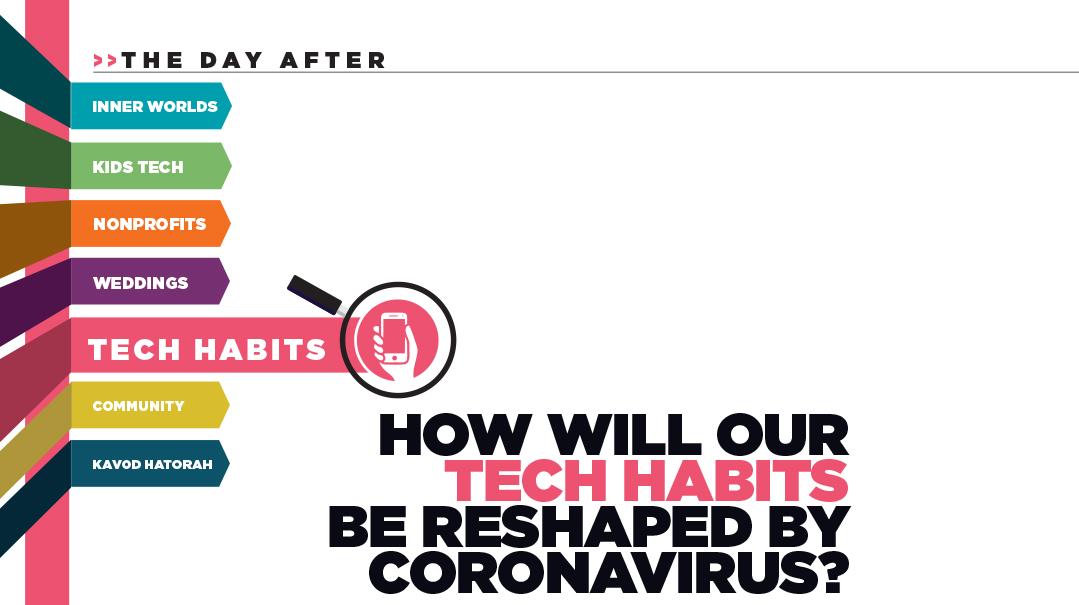
We make our poorest food choices when we’re hungry. Send me into a supermarket with an appetite and I’ll return with potato chips, cakes, cookies, and an unusual amount of pickles. I’m stunned, almost offended, when my wife asks after my return, “Well, what are we going to eat for dinner?” Pickles and potato chips felt reasonable in the store, but my wife is right — they’re not a meal.
Before this pandemic, I think a lot of us — myself included — looked at the online world with the same eyes as a famished shopper in the grocery store. Can’t we just solve this over email? Let’s just Facetime. But now we live in a world where virtual is our only option and it’s starting to feel like our grocery cart is filled with just pickles and chips.
How will this period impact our future relationship with technology? I think the past months have given us a very quick and very intense tutorial on the advantages and disadvantages of technology. Going forward, I think we will appreciate it for what it is: a tool.
As some readers may quietly know, I am fairly active on social media. In my capacity as Director of Education for NCSY, it is an invaluable outreach tool. I have about a million engagements a month according to the analytics. Oftentimes — maybe with a tinge of cynicism or even jealousy — friends of mine in education ask me about online presence. Is it really appropriate? Is it necessary? Is it really helping?
My answer is two-fold. Yes, technology has incredible power. I have been able to share ideas, inspiration (and some narishkeit) with an entirely new audience. But, I explain to my educator friends, online relationships are not the same as the ones you form. I have several thousand followers and millions of engagements, but unless we connect in person I am not invited to any weddings or Bar Mitzvahs. I’m not a part of their life in that way. Recognizing that difference is crucial.
Zoom classes are nice. I miss the culture that is created in a classroom. Pre-Shabbos video gatherings can be uplifting. I miss our hashkamah minyan. Massive virtual gatherings —with roshei yeshivah, chief rabbis, and inspiring speeches — will never replace thirty people sitting around a table for a shiur. When this is over, I am not worried that our virtual connections will become the norm — because with all the virtual now I am still starving for real relationships.
Online engagement is empty calories. That doesn’t mean I don’t enjoy chips and cookies, but it means I don’t mistake them for dinner. During this pandemic we’ve all been forced to sustain ourselves with the snack equivalent of relationships. But at the end of my day, I go to bed feeling empty. The honesty and authenticity of human interaction, we’ve been forced to discover, cannot be replaced.
Of course, I plan to remain online as will much of the world. By and large the internet is here to stay, as a tool for commerce, planning, and wide-scale engagement. There’s never been a time like now to drive home its importance. I am certainly not minimizing that. But we have also discovered what cannot be replaced. All of the virtual concerts, meetups, calls to family are so wonderful and appreciated. But when we hang up, we’re still hungry.
Going forward, I think we will spend more time appreciating the main dish of personal connection.
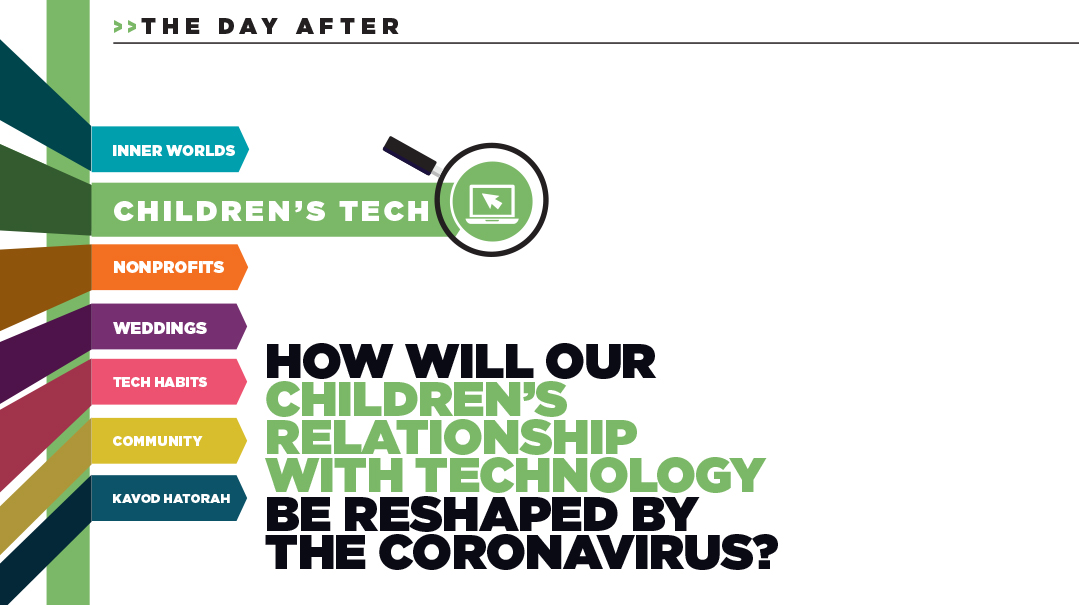
The total closing of our school buildings in March was unprecedented. It was also sudden. With no time to plan, principals and parents scrambled for solutions. The situation spawned a lot of changes for our schools, for better or for worse. Now we’re looking to the future and thinking, what’s next?
In 2014, I created the Digital Citizenship Project to teach schools and businesses to approach digital engagement in a thoughtful and deliberative fashion, so I’ve been getting lots of phone calls since the lockdown took effect. Parents and educators want to know how we’re supposed to handle the transition to remote learning. The educators want to talk about pragmatics — how do we make this work, what platforms should we use, and do we maintain or change our academic standards now? Parents are also sharing their concerns about the excessive screen time their kids may be absorbing.
Here’s the big-picture answer. We want our kids to remember this time positively. That should take precedence over academic rigor. While structure and routine are important, flexibility and empathy are also critical. Everyone has to practice flexibility and understanding; this is a new situation for everyone — parents, kids, teachers, and principals.
In this new situation, our educational model has changed. And a lot of the success of the new educational model depends on the parents.
We have to acknowledge the variables. Some families have two children, some have twelve. Some parents are trying to work from home, some parents are suddenly under the stress of unemployment. Some families have sick family members, or lost family members. Some parents and some kids are naturally more inclined to the distance-learning model; others less so. All these variables may contribute to parents’ anxiety, which can interfere with our ability to create a maximally healthy environment for our children at home.
Remember, back in the day, when we used to fly on airplanes? The famous oxygen-mask rule applies here — if there is a sudden change in cabin pressure, you put on your own mask first, before your kids’. Because you can’t help your kids unless you can breathe. So I advise parents now: breathe. Breathe so you can help your kids breathe. This is temporary. Do your best. As Rabbi Yissocher Frand said at the recent Siyum HaShas (feels like a lifetime ago): Don’t let the perfect be the enemy of the good. Academic perfection is not the goal right now. Instead, we can model for our kids how to handle tough times and even flourish when things don’t go according to plan.
While the academic experience may be diminished, the educational opportunities are not. The research has long supported project-based learning, and right now, we are living the ultimate project-based learning experience. With no more cleaning help, my kids have learned to do the laundry. (Just think what a catch they’ll be when they reach shidduchim.) With reduced schedule impositions from the outside, they’ve learned to manage their time. With a slower, less distracted lifestyle, there is more opportunity for family bonding. It’s heartening to see the frequency at which fathers and sons are having a catch and mothers and daughters are going on walks in my neighborhood.
In my field we do a lot of data collection and study, and we design the surveys by identifying what statement we want to make at the end. So what statement do we want to make when the pandemic is over? “My kid mastered algebra”? or, “We grew as individuals and as a family”?
That said, there is still a need to maintain academic learning. And that brings a whole new set of questions, many related to screen time. That version of the phone call goes like this: “Dr. Shapiro, you’ve been lecturing against the dangers of technology use all this time, and now my kids are on screen all day. It’s frying their brains!”
I get it. We like to put things in boxes. Kosher, treif. Mutar, assur. But the following statements are both true:
Technology is bad. Technology is good.
The goal is to maximize the benefits and avoid the negative effects.
Distance learning is not ideal. No one thinks it is. But right now, we can’t be in our brick-and-mortar schools. Our schools were forced to make changes.
Many schools chose to avoid screens entirely, and use teleconferencing exclusively. Other schools, including schools that usually discourage device ownership and usage among kids, are now doing device-based learning. They’ve made the decision to leverage technology in a productive way.
And those changes impact our kids. Excessive screen time may result in a variety of consequences — because everything we do or don’t do comes with consequences, including a complete loss of academic structure, global pandemics, and social isolation and distancing. As parents, we always need to assess the consequences of doing something versus the consequences of not doing something.
So the question becomes: Are those changes permanent?
My hypothesis, based on past research, is that it’s likely that the possible negative impact of temporary increased technology use will fade. The headaches, neckaches, dazedness, and stress that may be associated with “creative screen time” will end when the kids go back to school. I am currently conducting a national study on distance learning with The Consortium of Jewish Day Schools and the Digital Citizenship Project. Early findings suggest that nearly 60 percent of parents report that their children are experiencing no adverse symptoms from the increased creative, educational type of screen time. (Note: I refer here to creative distance-learning screen time, which is educational, as opposed to consumptive screen time, like watching movies, or even interactive screen time, like video games. The negative effects of movies and video games are far greater than the effects of the distance-learning screen time discussed here.)
We can be reasonably confident that the negative effects will be temporary. Kids are resilient. A 2014 UCLA study found that after only five days in a no-tech sleepaway camp environment, children’s ability to read facial expressions and social cues, and form meaningful relationships, vastly improved. The negative consequences of excessive screen time will self-correct when we go back to normal. So good news, parents — this increased educational screen time is not going to negatively affect your kid forever.
And what about the schools? Again, I think that in many ways, things will revert to the way they were. Even if it is not possible to immediately restore the exact historical model we were used to, we will find ourselves better equipped to identify our academic priorities, and we’ll have new tools in our educational toolbox.
Everyone wants to go back to school — principals, teachers, parents, and even kids. But maybe now that we’ve identified and practiced some of the benefits of careful tech integration, we can enhance and enrich traditional education models with what we have learned. Maybe we’ll be able to leverage its benefits for educational assessments, curriculum development, and building student creativity. Maybe snow days will become distance-learning days. Maybe we’ll come out from all of this with stronger families, better relationships, an enhanced appreciation for our schools and the people who make them happen, and an enhanced learning system too.
Wouldn’t that be great?
Dr. Eli Shapiro is a licensed clinical social worker with a doctorate in education and specialist’s certificate in Jewish educational leadership. He is the creator and director of The Digital Citizenship Project, an expert on the social and emotional functioning of families, and leads a national study on Jewish families and technology.
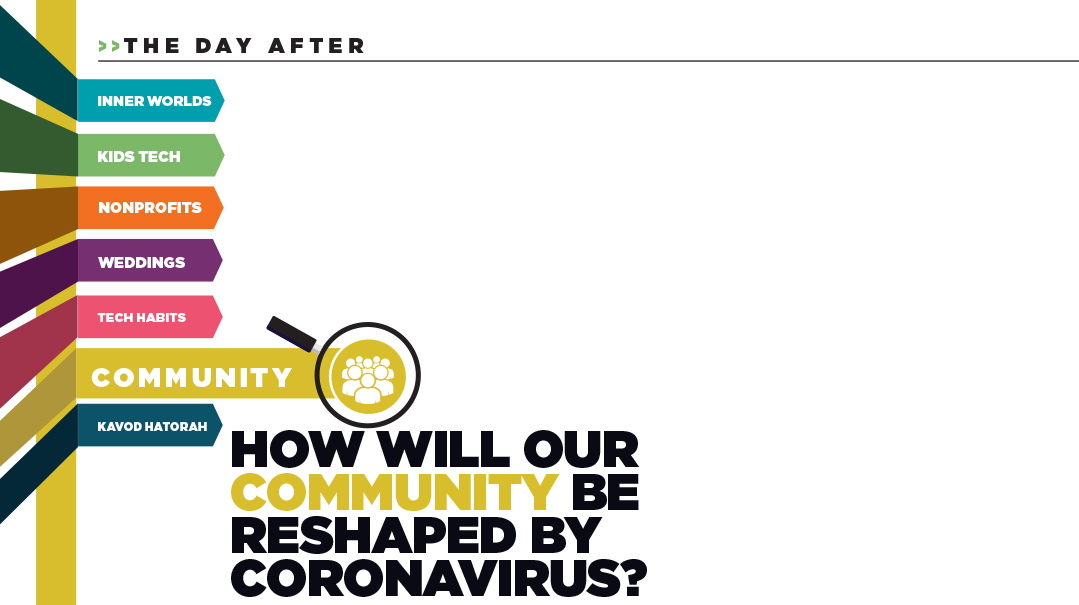
Since its December 2019 outbreak, COVID-19 has rapidly spread into a deadly global pandemic and created an unprecedented international challenge that rivals the turmoil seen in times of war. Families are sequestered together, economic constraints are increasing, and home schooling is hampering the educational and social development of school-aged children across the world. Religious institutions and practices are also being impacted through shut-downs of public prayer and religious study. All of these are bona fide reasons for stress, anxiety, depression or worse, particularly within religious communities. Yet my research suggests that the Orthodox Jewish community is thriving.
In the first weeks of the pandemic, my colleagues at Touro College and I collaborated with several prominent Orthodox clinical scientists including Drs. David H. Rosmarin, David Pelcovitz, and Yitzchak Schechter, to study the experiences of COVID-19 within the community, as well as coping methods and mental health implications. We collected the responses of over 1,000 members of various Orthodox Jewish communities across the United States. The overall picture that emerged was of a community drawing deeply from its time-tested resources, and as a result, successfully weathering the current storm.
Our findings are consistent with widespread perceptions that Orthodox Jews have higher levels of exposure to COVID-19 than the general population. Specifically, 17 % reported having a confirmed or suspected infection, 34 % reported direct contact with someone infected, and 43 % reported that someone close to them was infected. Yet our results suggest that this was not due to laxity in adherence to legal and medical guidelines. On the contrary: 87% reported adhering “very much” to social distancing requirements, safe handwashing practices, and isolation/quarantine with only 1% reporting adhering “not very much” or “not at all.”
So what explains the higher level of contagion? While we do not have direct data, it is likely due to: 1) Those having personal experience with COVID-19 being more likely to participate in our survey; 2) Orthodox Jews’ tendency to live in large metropolitan areas that have had high rates of exposure; 3) Large family size, which increases the likelihood of exposure; 4) Initial spreading of COVID-19 in the US occurred during Purim and Pesach when many travel and gather in large groups with friends and family.
Despite higher risk and exposure to COVID-19, respondents to our survey on average reported only slightly more than “a little bit” of impact in 12 different key life domains (see Figure 1). Work, family, finances, and fitness emerged as areas of slightly higher impact, while faith in G-d, religious observance, and character (e.g., patience and kindness) were hardly impacted at all. This is particularly striking, considering that so many Orthodox religious practices center around communal involvement — from davening with a minyan to learning with a chavrusa. Thus, while COVID-19 may have impacted our ability to connect with each other in shul, for most of us, it has not taken away our sense of connection with Hashem.
In terms of mental health, only 13% of respondents reported experiencing anxiety and depression during the initial weeks of the COVID-19 pandemic, and a slightly higher 22% reported some trauma symptoms related to COVID-19 such as persistent thoughts, difficulties relaxing and sleeping, hypervigilance, and hyperarousal. We also found that the vast majority of community members (82%) reported that COVID-19 had a positive impact on their lives, such as more family time, refocusing on important priorities, engaging in new activities, and reconnecting with friends and family. These findings are in stark contrast to the general population, where levels of anxiety and depression are at all-time highs, and positive effects of COVID-19 are almost unheard of.
In terms of specific groups, older adults in our sample tended to report less negative impact and less distress, but also reported less positive impact. Those with larger families tended to report higher impact on work and finances, but also reported higher positive impact. This may reflect, on one hand, the difficulty of working from home while caring for a large family and small children, and on the other, the benefits of being able to spend more time with them. There were also small but consistent gender differences as women in the sample reported higher levels of negative impact than men particularly in areas such as sleep, family, and emotions, which may reflect increased housekeeping and childcare responsibilities and severely curtailed assistance such as cleaning help and babysitting. There were only minimal differences between respondents from different locations (e.g., New York & New Jersey versus out of town) and communities (e.g., “yeshivish versus “Modern Orthodox”). Nearly all had similar levels of exposure, impact, distress, and coping.
What might explain this discrepancy between high levels of exposure and risk versus low levels of impact and mental health concerns? We believe that this is largely due to the strength that emunah and bitachon provide, and our data supports this idea. Specifically, many respondents endorsed using positive methods of coping such as accepting reality, looking for something good in it, taking action, and finding comfort in religious beliefs and prayer — all of which correlated with less impact and better mental health.
On the other hand, negative coping methods such as denying reality, giving up, using alcohol or other drugs, expressing negative feelings, and blaming themselves were far less frequent and correlated with more impact and poorer mental health (Figures 2 & 3).
In fact, the most powerful predictors of better outcomes was sincere religious belief, trust in G-d, and use of religious coping strategies, while those that fared poorest reported less sincere beliefs, mistrust in G-d, and struggles such as questioning G-d’s intentions and ability to help. However, this was far less frequent in our data.
Another explanation for why Orthodox Jews seem to be faring so well, despite higher risk and exposure, is community support. We have all witnessed an incredible collective outpouring of assistance and support from organizations and individuals including food distribution, financial support, medical care, and plasma donation. Our data suggest that this active form of communal support and coping helps those who receive these acts of chesed, and those who provide it as well. Of course, while these trends are true on average, many members of our community have experienced profound loss and challenges, and data cannot address these personal experiences. However, as a whole our community is using the generous resources our mesorah provides and is (really) faring well.
(Originally featured in Mishpacha, Issue 811)
Oops! We could not locate your form.

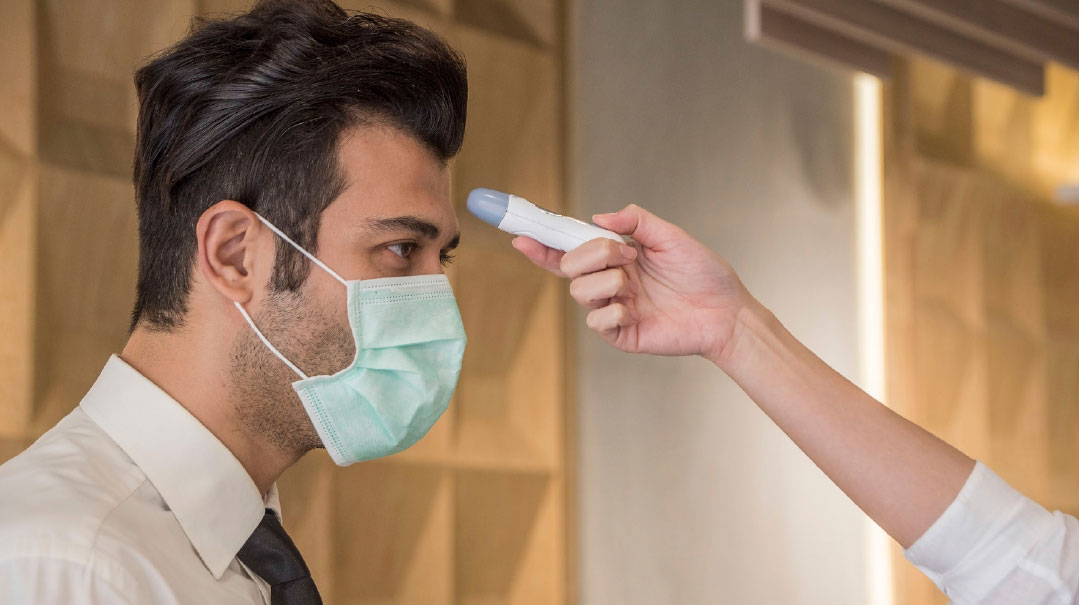


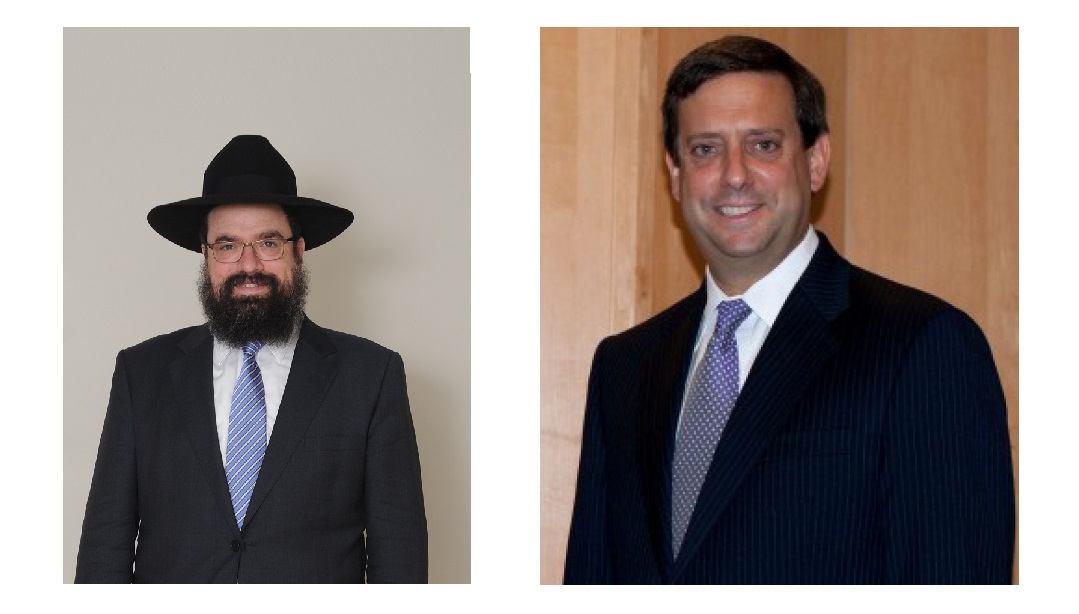


Comments (0)